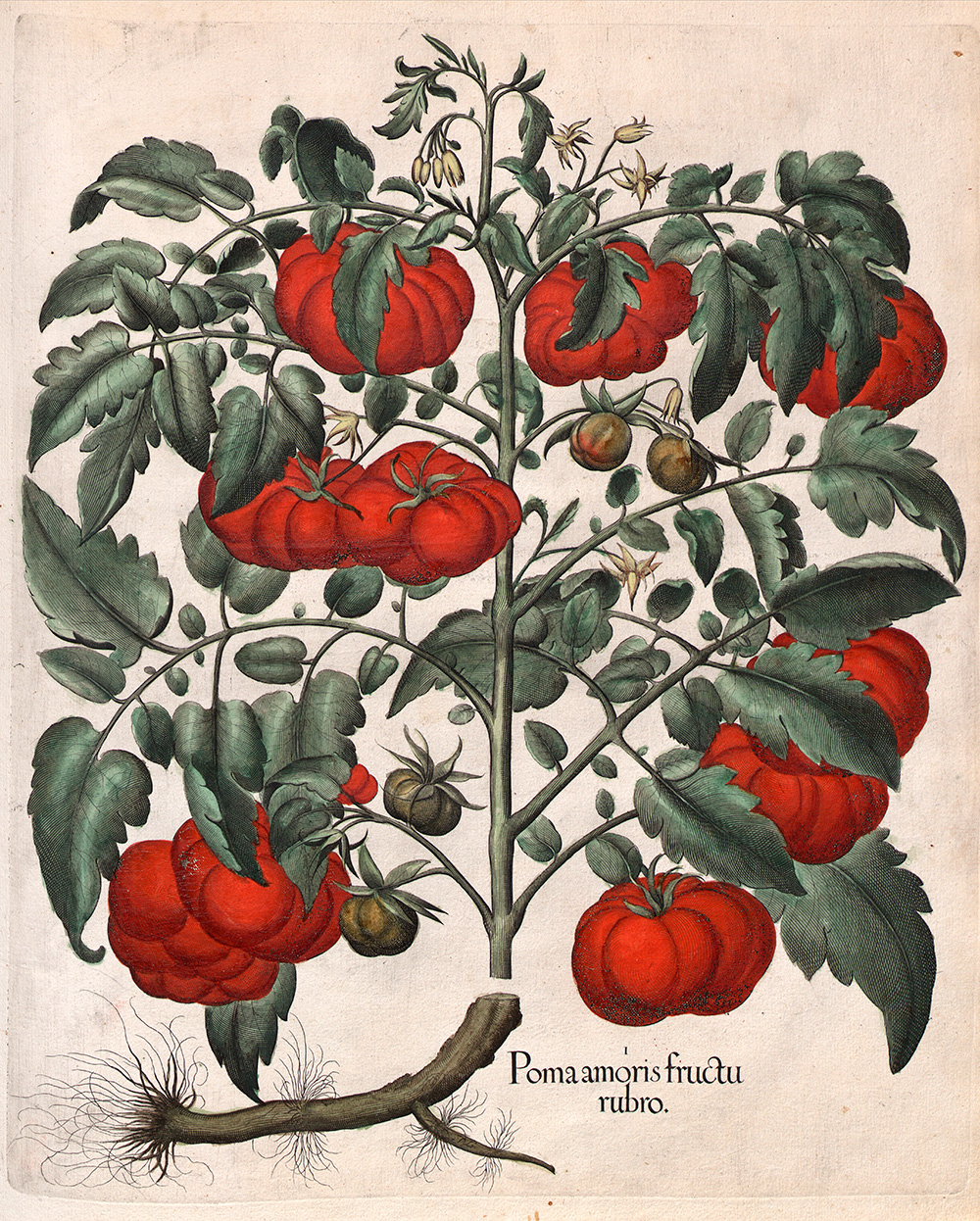Mexico is generally accepted as the place where the tomato, Lycopersicon esculentum, was first domesticated, although the evidence is not conclusive. Its name is derived from the Náhuatl (Aztec) word tomatl. The initial date of domestication is also unknown, but tomato cultivation was well established when the European explorers arrived in Mexico and the Americas.
The first tomatoes arrived in the Iberian Peninsula soon after Cortez had conquered Mexico, but they initially spread across Europe only as a garden curiosity. Tomatoes were met with a lot of skepticism, as they did not look or taste like any other known plant, their texture was unusual, the green fruit was very bitter, and once ripe they were soft and disintegrated rapidly when cooked. They were also feared to be poisonous because they belonged to the deadly nightshade family, Solanaceae. Tomatoes were nicknamed the “devil’s fruit” or “poison apples” due to their red appearance and the belief that they were responsible for causing illnesses and food poisoning.
The tomato was first mentioned by the herbalist Pietro Andrae Matthioli in 1544, who described it as a nightshade and an aphrodisiac, giving it “a shady reputation for being both poisonous and a source of temptation” (Smith, 2013 – pg. 2). Matthioli also described how tomatoes were eaten in Italy with oil, salt, and pepper and called them pomi d’oro (golden apple), suggesting that the first tomatoes in Europe were yellow, rather than red.
Acceptance of the tomato as a wholesome fruit was slow; nevertheless, there was considerable consumption of tomatoes in Spain and Italy by the late 17th century. By 1800, Sauer (1992) states that the tomato was the “commonest of all vegetables in Spain, grown in every village”. By then the French were consuming some tomatoes, but northern Europeans still avoided them. Across most of Europe, widespread acceptance of the tomato would have to wait another 100 – 200 years. It was not until the late 17th century, that the tomato began to take hold of Italian cuisine. The first tomato recipe appeared in Italy in 1692 in the cookbook Lo scalco alla moderna, by Antonio Latini.
Soon after the Spanish colonization of Peru, they distributed the tomato throughout their colonies in the Caribbean. They also took it to the Philippines, from whence it was carried to China and Southeast Asia. Tomatoes arrived in China sometime in the late 16th or early 17th centuries, where they were initially met with both curiosity and confusion. They eventually found their niche in Chinese cuisine in the 1800s.
Illustration: Basilius Besler – Tomatoes (Hortus Eystettensis, 1613)
Bibliography:
Hancock, J. F. (2022) World agriculture before and after 1492: Legacy of the Columbian Exchange. Springer.
Janick, J. (2013) Development of new world crops by indigenous Americans. HortScience 48 (4): 406-412.
Rick, C.M. and Holle, M. (1990) Andean Lycopersicon esculentum var. cerasiformae: genetic variation and evolutionary significance. Economic Botany 44, 69–78.
Sauer, J. D. (1993). Historical geography of crop plants: a select roster. CRC press.
Smith, K. A. (2013) Why the tomato was feared in Europe for more than 200 years: How the fruit got a bad rap from the beginning. Smithsonian Magazine.
